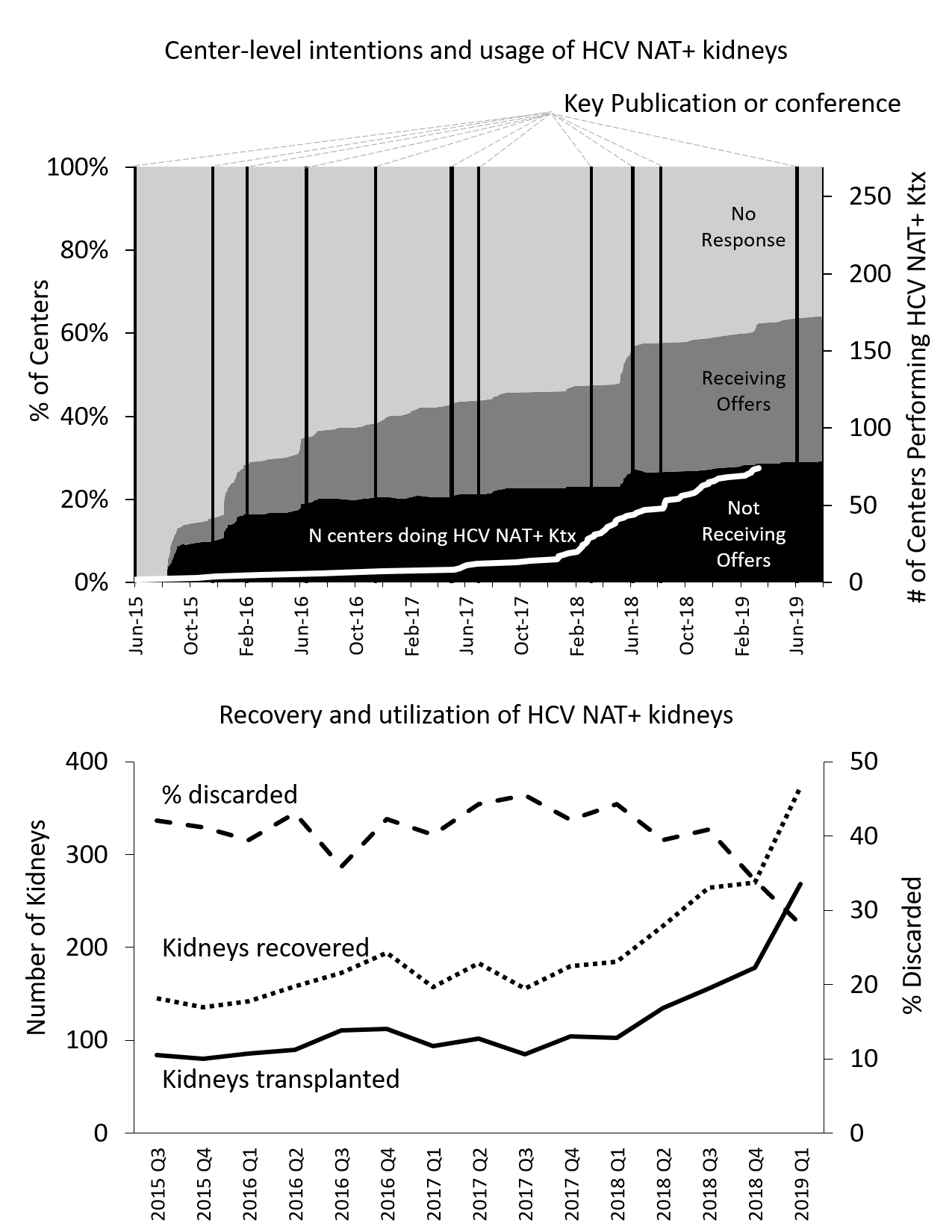Utilization of Kidneys from Deceased Donors with Positive Hepatitis C Nucleic Acid Amplification Testing (HCV NAT+)
Columbia University, New York, NY
Meeting: 2020 American Transplant Congress
Abstract number: 120
Keywords: Allocation, Hepatitis C, Kidney transplantation, Resource utilization
Session Information
Session Name: Kidney Deceased Donor Selection I
Session Type: Oral Abstract Session
Date: Saturday, May 30, 2020
Session Time: 3:15pm-4:45pm
 Presentation Time: 3:51pm-4:03pm
Presentation Time: 3:51pm-4:03pm
Location: Virtual
*Purpose: With modern direct-acting antiviral agents, transplantation of kidneys from HCV NAT+ deceased donors for recipients with or without HCV has expanded the kidney supply. We sought to determine whether US transplant centers’ intentions and usage of HCV NAT+ kidneys matched a growing body of evidence demonstrating safe and effective use of these organs that were historically at high risk of discard.
*Methods: Transplant centers set filters dictating which national or regional organ offers from the United Network for Organ Sharing (UNOS) Organ Center are automatically declined, bypassing their center. We used national UNOS data on center filters to examine changes in HCV NAT+ filter settings from its first use on 8/10/15 through 7/31/19. We calculated the proportions of 269 transplant centers opting to receive these offers, opting to bypass these offers, or with no response (receiving the offers by default) at each moment a center changed their HCV NAT+ filter settings. To examine utilization of HCV NAT+ kidneys over time, we determined the number of deceased donor HCV NAT+ kidneys recovered, transplanted, and discarded quarterly from UNOS Standard Transplant Analysis and Research Files and calculated the cumulative sum of centers performing HCV NAT+ kidney transplants through 3/31/2019.
*Results: Within a month of the first use of the HCV NAT+ filter, 35 (13%) of centers recorded a response. Of these, 66% (9% of all centers) opted out of receiving HCV NAT+ offers. At one year, 20% of all centers had opted out of receiving these offers, a proportion that increased to 29% of all centers by 4 years after first filter use. In contrast, 4% of centers indicated a willingness to receive these offers a month after first filter use which increased to 16% at 1 year and 35% by 4 years. The count of centers transplanting at least one HCV NAT+ kidney increased from 1 in April 2015 to 74 in March 2019. The number of HCV NAT+ kidneys recovered and proportion transplanted rose from 145 recovered with 84 transplanted (42% discard) in 2015 Q3 to 373 recovered with 268 transplanted (28% discard) in 2019 Q1 with the increased utilization trend only observed from 2018 onwards (Figure 1).
*Conclusions: There is continued reluctance by a sizeable minority of centers to use HCV NAT+ kidneys, despite mounting evidence of safety and efficacy and increasing use by other centers. Heterogeneity in centers’ willingness to consider HCV NAT+ offers should be made transparent to patients who may be disadvantaged at centers unwilling to consider such organs.
To cite this abstract in AMA style:
King KL, Husain SA, Mohan S. Utilization of Kidneys from Deceased Donors with Positive Hepatitis C Nucleic Acid Amplification Testing (HCV NAT+) [abstract]. Am J Transplant. 2020; 20 (suppl 3). https://atcmeetingabstracts.com/abstract/utilization-of-kidneys-from-deceased-donors-with-positive-hepatitis-c-nucleic-acid-amplification-testing-hcv-nat/. Accessed December 14, 2025.« Back to 2020 American Transplant Congress

